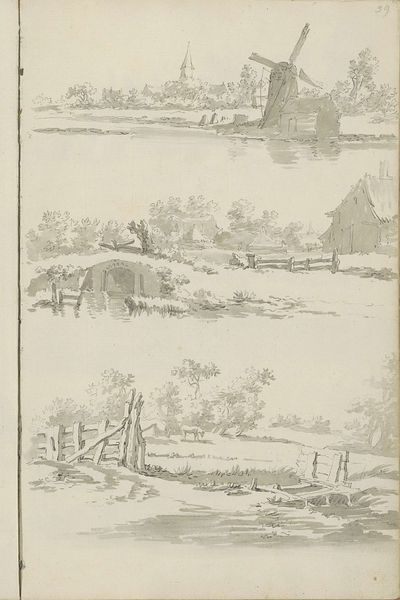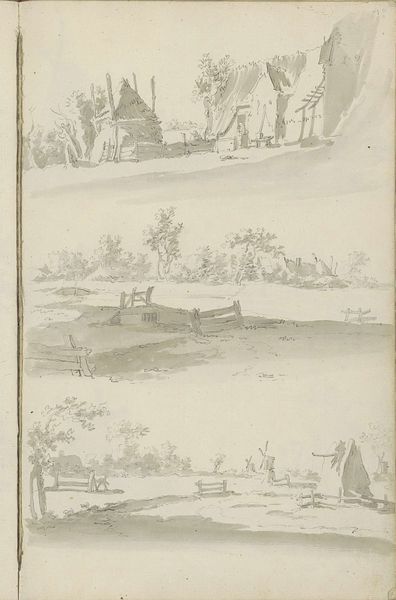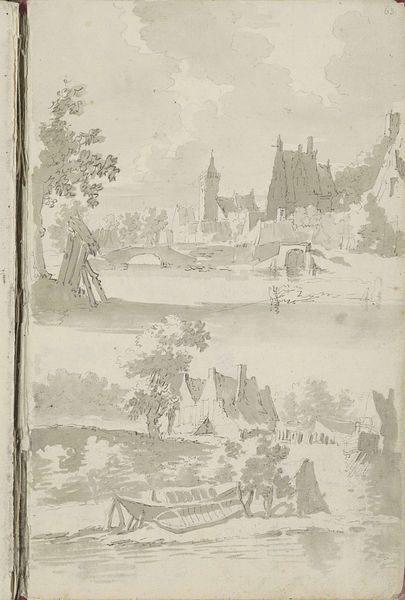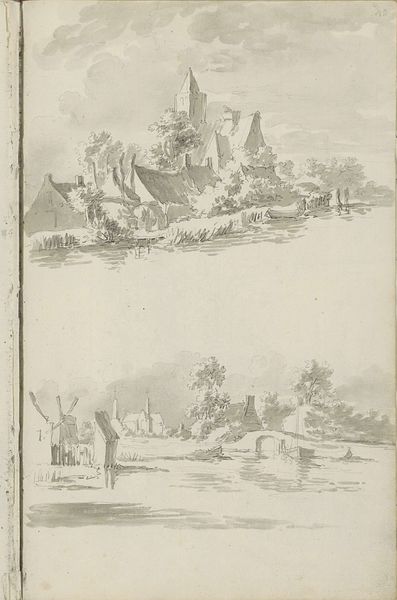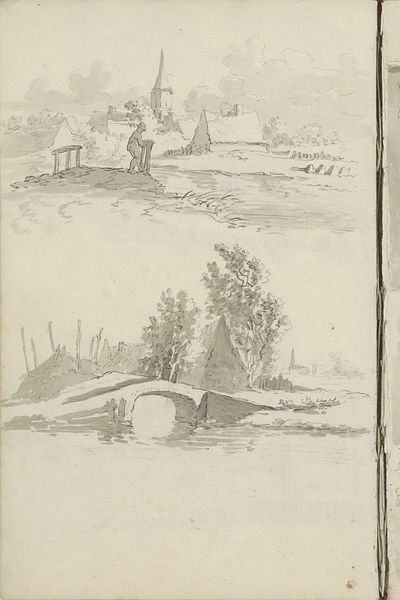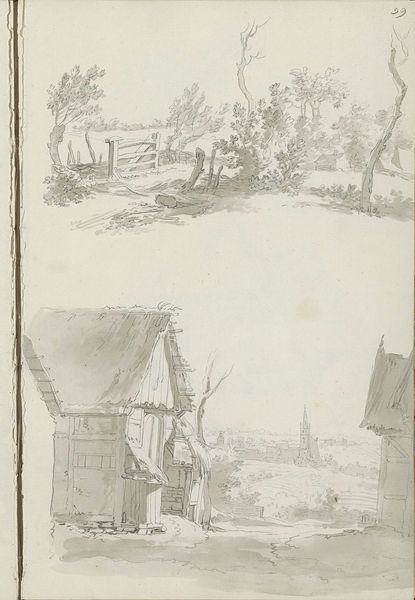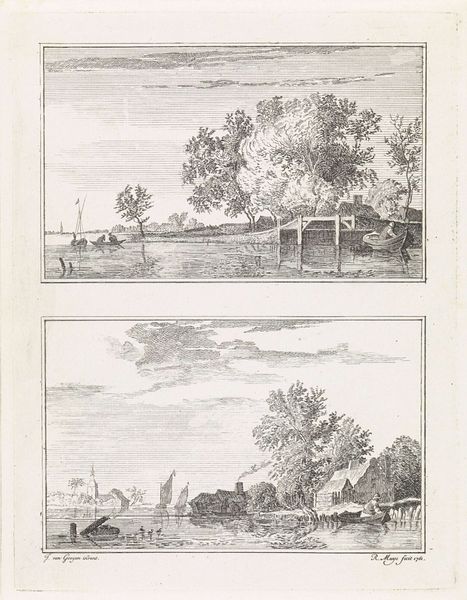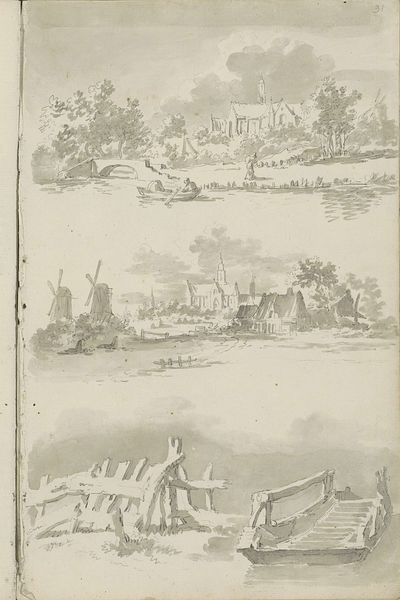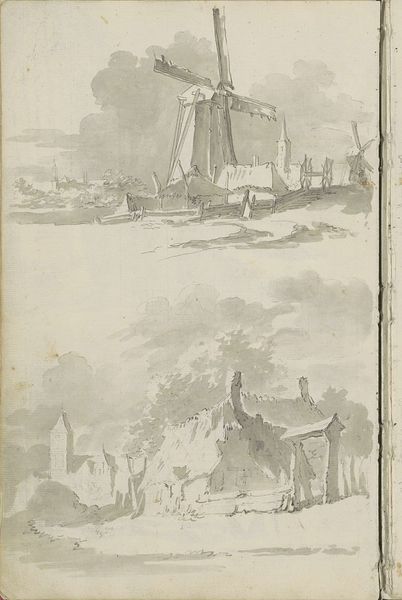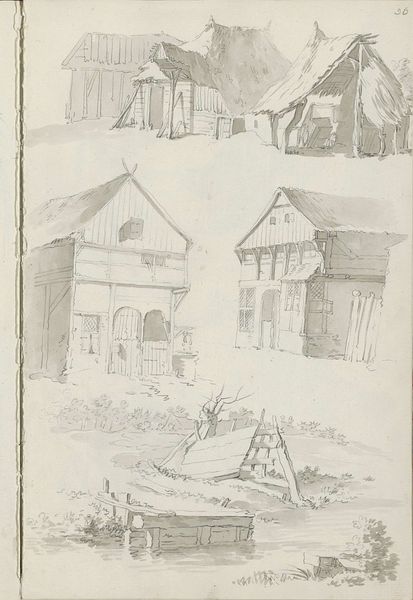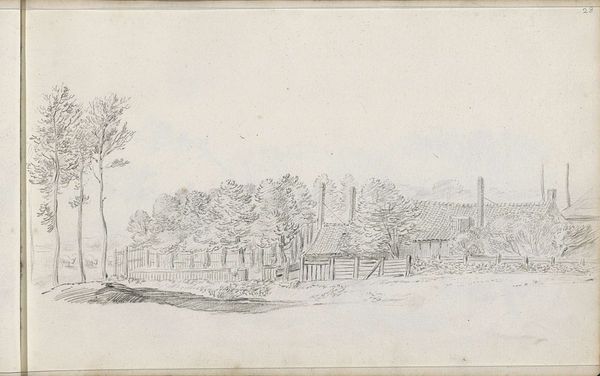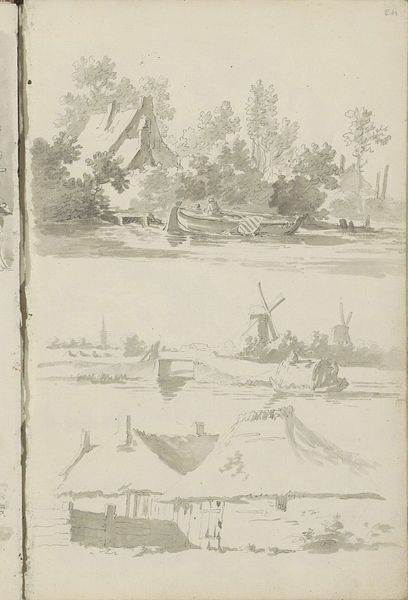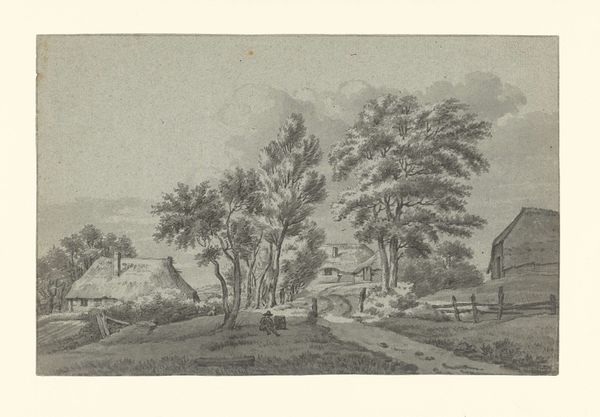
drawing, paper, ink, pen
#
drawing
#
amateur sketch
#
aged paper
#
toned paper
#
light pencil work
#
dutch-golden-age
#
neoclassicism
#
pen sketch
#
pencil sketch
#
landscape
#
paper
#
personal sketchbook
#
ink
#
ink drawing experimentation
#
pen-ink sketch
#
pen work
#
pen
#
cityscape
Copyright: Rijks Museum: Open Domain
Curator: Allow me to introduce "Stadsgezichten met kerktorens en een landschap met molen," or "Cityscapes with Church Towers and a Landscape with a Mill," an ink and pencil drawing on paper by Barend Hendrik Thier, likely created between 1780 and 1800. Editor: Well, my immediate impression is this feels very dreamlike, almost ephemeral. It’s the muted palette, all these shades of gray on aged paper… the lines are so delicate. Like memories fading into the background. Curator: Indeed. Notice how Thier uses recurring motifs - the church spires acting as central pillars of each composition? Churches served as visual anchors within communities, symbolizing not only spiritual faith, but social stability. Their prevalence here seems deliberate. Editor: Absolutely, the spires do repeat as this beacon, don't they? Almost mocking our constant search and need of security? But there is such fragility to how these landscapes are sketched... I almost feel melancholic observing these ghostlike sceneries. It reminds me of that human need for peace. A sort of pastoral longing maybe? Curator: That’s astute. Consider also the windmill, featured in the lower register. Beyond its literal function for milling grain, the windmill, from a psychological perspective, embodies cycles, repetition, the turning of time and seasons. The ever-repeating cycles in these people's mundane routines? Editor: Good point, indeed, they represent repetition! These motifs feel comforting, because they're very traditional, so their repetition grants some hope. It also really illustrates the style of this time, which seems very neoclassical, like there are nods to Dutch Golden Age art. Curator: Precisely. You see this combination of neoclassicism and echoes of the Dutch Golden Age aesthetic – a kind of looking back while tentatively stepping forward into a new era. The toned paper itself carries its own history. Editor: Thinking of history here is interesting, I feel this sort of nostalgia with toned paper because that aged aspect connects me with time; I suppose people who observe this, in another two hundred years from now, will experience something similar about our contemporary art pieces as well. A cultural continuum. Curator: I think that hits the nail on the head. These sketches function almost as cultural palimpsests, inviting us to trace those echoes of continuity, change, and cultural memory within our collective visual lexicon. Editor: For me it emphasizes that quiet connection we can have to even the smallest glimpses into lives lived long before our own. Even if they are just fragments sketched on old paper.
Comments
No comments
Be the first to comment and join the conversation on the ultimate creative platform.
